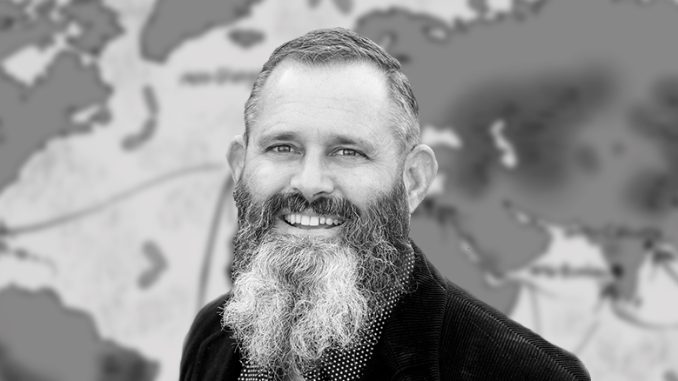
Nobody likes to be told, “I told you so.” But right now, I suspect many of my former students are thinking, “yeah, Professor Vann told us so”. This is because for some two decades I have been highlighting the history of infectious disease and the diverse impacts of pandemics in my Southeast Asian history courses. I also recently published a volume in the Oxford University Press Graphic History on the city of Hanoi during the Third Plague Pandemic (1855-1950), in addition to previous articles on the political and cultural history of disease in Southeast Asia during the era of High Imperialism. 1 In both my published research and my classroom lectures, I stress the importance of understanding past pandemics in order to prepare for inevitable future disease outbreaks. I also use the study of disease as a prism to explore constructions of power, particularly in colonial Southeast Asia. As I am currently teaching my introduction to Southeast Asian history, many of my students asked if I have tweaked my syllabus for the current pandemic. I can proudly answer “no, I’ve been teaching these things for years.”
In my Southeast Asia course, I use the history of plague and cholera to illustrate several crucial historical phenomena. My lessons are not so much the history of the disease itself or traditional medical history. Rather, they focus on how public health measures were a form of colonial modernity. That is to say, developmental projects imposed by a foreign occupier at the barrel of a gun. Scholars of imperialism have stressed the ways in which the colonies served as site of innovation for early 20th century technocrats. Anthony D. King, David Rabinow, Gwendolyn Wright, James C. Scott, and Timothy Mitchell all contributed foundational works to the study of how European administrators used the colonial state as an apparatus to experiment with state-led modernization and effect material change in the life of the colonized peoples. 2 For French Indochina, my area of expertise, such public health projects were central to the French notion of la mission civilisatrice. The soi-dissant “civilizing mission” was the francophone analog to the more famous “White Man’s Burden” ideology. According to this self-deluding logic, the authoritarian colonial regimes had a moral responsibility to improve the lives of their subjects and any developmental projects justified the empire. Whether such invasive socio-political interventions were welcomed by the conquered populations was irrelevant. Indeed, the first and third stanzas of Kipling’s poem address this: 3
Take up the White Man’s burden—
Send forth the best ye breed—
Go bind your sons to exile
To serve your captives’ need;
To wait in heavy harness
On fluttered folk and wild—
Your new-caught, sullen peoples,
Half devil and half child.
[…]
Take up the White Man’s burden—
The savage wars of peace—
Fill full the mouth of Famine
And bid the sickness cease;
And when your goal is nearest
The end for others sought,
Watch Sloth and heathen Folly
Bring all your hopes to nought.
While it was a moral imperative to improve the lives of colonial subjects, Kipling warned that these half devils/half children would resent Europeans who wanted to better their world. Colonial rulers should expect “The blame of those ye better, The hate of those ye guard—”. Kipling wrote this poem for the United States upon its annexation of Southeast Asian territory. In terms of the history of disease, the America invasion, counter-insurgency campaign, and subsequent occupation of the Philippines occurred at the height of the Third Bubonic Plague Pandemic and caused a cholera outbreak in the archipelago. Disease, not American bullets, killed the majority of the hundreds of thousands of Filipinos who died between 1898 and 1913.
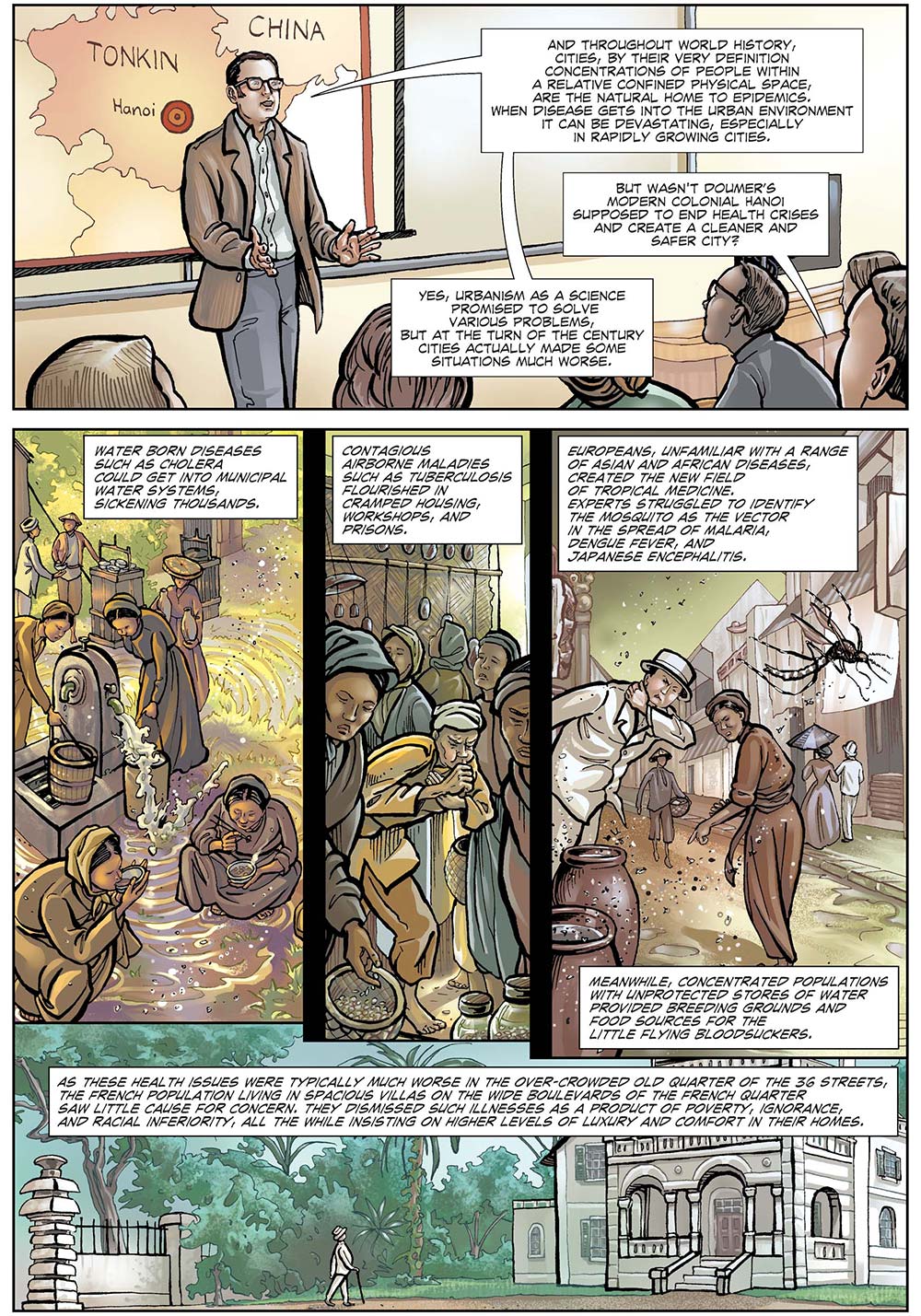
My own research on plague and cholera play an important role in how I teach Southeast Asia’s pandemic history. As with the Philippines, Western colonialism brought at least two pandemic diseases to the region. In my courses I use cholera to illustrate both the connection between imperial transportation and the ways in which many Southeast Asians live in close proximity to water. Cholera had existed as an endemic disease in algae in the Bay of Bengal for centuries but never really lead to widespread human infection. However, the massive 1815 eruption of Mt. Tambora on the island of Sumbawa in the lesser Sundas sent so much ash into the sky that it induced climate fluctuations including the “year without a summer” in Western Europe, unusually warm temperatures in the Artic, and a drought followed by massive floods in India. 4 These sudden climate disruptions caused the highly adaptive cholera bacterium to mutate into a more virulent strain which spread around the world. The new colonial maritime transportation networks globalized the disease. Arriving on ships in ports in Asia, Africa, Europe, and the Americas this strain of cholera became a true pandemic. During an outbreak in London, Jon Snow established that it was water-borne and helped launch the field of public health. Cholera repeatedly swept through France and onto its colonies in North Africa. When troops from the French Foreign Legion base in Algeria were sent to occupy northern Vietnam in the 1880s, they inadvertently brought cholera to Hanoi. Other troops movements would spread the disease to the Philippines and elsewhere in Southeast Asia where it thrived in wetlands, rice paddies, and urban ponds and canals, killing thousands who lived the region’s semi-aquatic lifestyle.
Bubonic plague was another disease the traveled on the colonial transportation networks. The Third Plague Pandemic started in mountainous Yunnan in the 1850s, eventually making it to Canton and Hong Kong in 1894. In the next few years it quickly spread to Manila, Bombay, Honolulu, Cape Town, Dakar, Alexandria, Rio de Janeiro, Porto, and San Francisco. 5 Thanks to the industrialization of maritime transportation and the opening of major canals, the plague moved much faster than the first waves of cholera. Earlier diseases took months to travel as sailing ships plied the winds around the Cape of Good Hope. Now steamships could move with no wind or power against the wind. First the Suez Canal (1869), and then later the Panama Canal (1914), dramatically reduced transoceanic travel times. All of this had the effect of further integrating Southeast Asia into the global economy, but also into the flow of diseases. Hanoi, the city that is the subject of most of my research, was linked to Chinese ports through Haiphong and traffic on the Red River. But it was also connected to Yunnan, the initial source of the plague pandemic, through new French railway lines. Both trains and steamships carried stowaway brown rats, some of whom carried the Oriental rat flea, Xenopsylla cheopis, infected with Yersinia pestis, the plague bacterium. Thus, two deadly diseases became pandemics thanks to Western imperialism’s industrialization of long-distance transportation, prefiguring the global spread of COVID-19 on low-cost air travel.
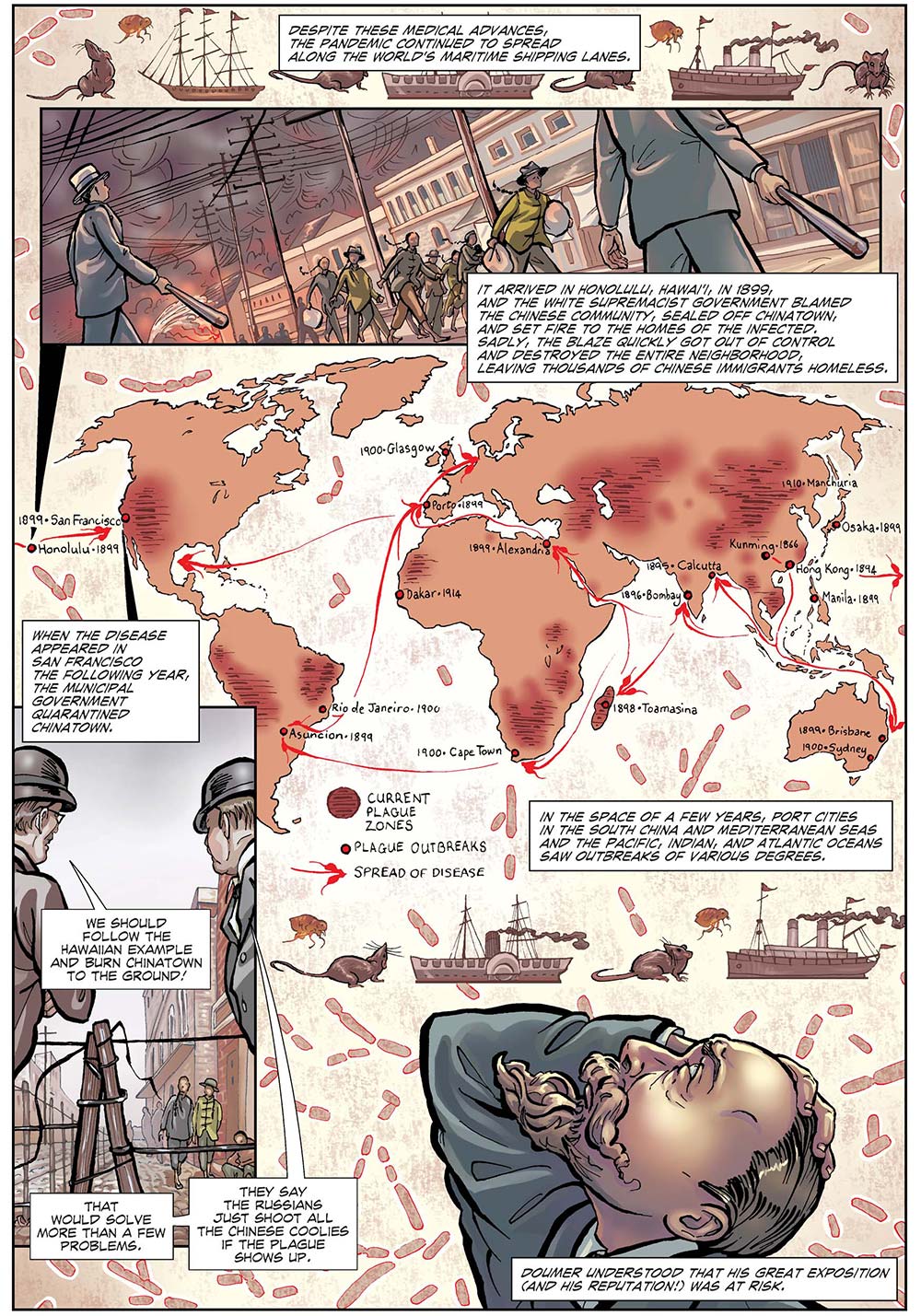
But imperial transportation networks weren’t the only aspect of colonial era modernization that facilitated disease outbreaks reaching pandemic status. In Hanoi, the French authorities had undertaken a massive sewer building project in the 1890s. Sewers were an entirely new phenomenon in Southeast Asia and central to French conceptions of modernity. Celebrating the subterrain waste removal system of Paris as crucial to the war against cholera, French technocrats decided that Vietnamese urban hygiene was woefully lacking. In the space of a decade the French laid kilometers of freshwater pipes and sewer lines in Hanoi. However, this underground urban infrastructure mirrored above ground racial inequalities. If the French enjoyed flush toilets and running water in their villas and workplaces, most Vietnamese and Chinese had to fetch water from public fountains and rely on night-soil collectors to handle their excrement. Such a stark contrast is an excellent example to teach the colonial order’s unequal power relationships. Ironically, as I discuss in The Great Hanoi Rat Hunt, Hanoi’s sewers offered a new ecosystem for the stowaway brown rats arriving from China. This invasive species was new to Southeast Asia and prefers to burrow down into the ground (as opposed to black rats which like to climb into trees or attics). Finding the sewers free of predators and offering kilometers of shelter filled with food, these brown rats quickly colonized the colonizer’s urban infrastructure. The brown rat population grew so large that there are reports of rats climbing up the pipes and into the homes of French colonists. By chance, Alexandre Yersin, one of the world’s leading experts on the plague, happened to be in Hanoi as the rat population explosion became worrisome. From his work in Canton in 1894 and his colleague Paul Simond’s experiments in Bombay and Karachi, Yersin knew these rats could spread the plague in Hanoi’s privileged French quarter. The municipal authorities then tried a series of anti-rat measures, including offering a few pennies for every rat tail taken from a dead rat. This seemed to work well for several months. From April to July 1902, there were daily reports of thousands of rats killed per day, with numbers regularly around 15,000 and even topping 20,000 in a single day. However, this apparent success proved illusory when a health official saw a rat run past with no tail. The authorities soon discovered that enterprising Vietnamese were cutting off rat tails, letting the rats go to produce more rats, and then collecting the bounty for the tail from the allegedly dead rat. Subsequent investigations revealed suburban rat farms and a Tonkin-wide smuggling network. The rat hunt was called off and the plague arrived in Hanoi in several waves, leading to hundreds of deaths and a series of invasive and profoundly unpopular public health measures.
This tale of colonial modernization schemes gone awry and the ways in which Southeast Asians outsmarted the European colonizers has been a part of my courses since I discovered it in the archives as a graduate student. Now, with my book (which happens to be a graphic history that presents my findings in an accessible but scholarly manner), I can use the narrative of the Hanoi’s rat hunt to illustrate several aspects of the colonial encounter, including the hypocrisy of la mission civilisatrice, the role imperialism in spreading disease, the racialization of colonial power relationships, and subaltern agency as anti-colonial resistance. Such stories of subaltern resistance resonate with my American students who are frustrated with months of social distancing and wearing masks.
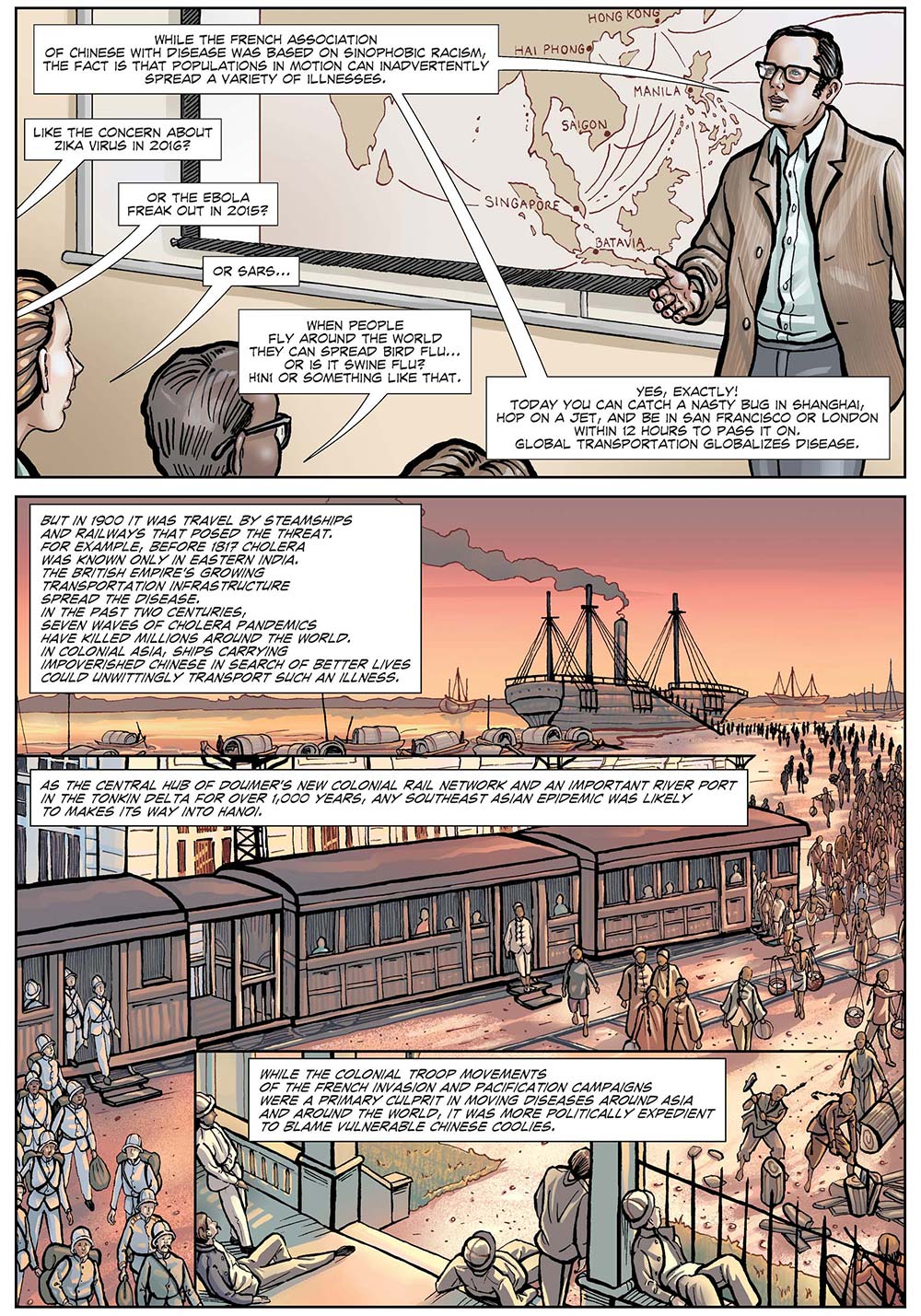
A final element of Southeast Asian disease history that I highlight in my course is Sinophobia. Sadly, this discussion is all too relevant to today’s COVID-19 pandemic. For a variety of reasons, Europeans vilified China and Chinese bodies as inherently unhealthy and diseased. I frame my discussion of Sinophobia by noting that the “Yellow Peril” discourse coincided with the Third Bubonic Plague Pandemic, the chaos within China induced by Western imperialism, and the waves of impoverished Chinese immigrating to Southeast Asia, the Pacific basin, and beyond in search of a better life. 6 In colonial Vietnam, French authorities feared that impoverish “coolie” laborers and wealthy merchants could both bring the disease from China and subjected them to special surveillance. In the Philippines, American authorities feared Manila’s commerce with China would bring the plague.
The plague has always been fond of sneaking into Manila and sweeping through the entire Filipino archipelago taking toll of the shivering millions by the tens of thousands. Just across a narrow stretch of water from Manila King Bubonic Plague has his cave, where he appears to have been born and bred. Right in the teeming heart of China, not far from the fens that surround the yellow torrent of the Great Yellow or Yangste-Kiang River appear to have been the prehistoric home and breeding place of King Plague.
[…]
Hence, the Chinaman’s blood inherits certain toxic qualities which counteract the poisonous influences of the germs which swarm in the patient’s blood by countless millions. 7
Expert and popular opinion condemned the allegedly unhealthy living conditions of the Chinese population both at home and overseas.
Why, then, should the disease rage so among the Orientals? The assertion that the plague is not usually infectious or contagious in the ordinary way applies only to people who are ordinarily cleanly on their habits. To those acquainted with the Oriental no further explanation is necessary. Once the plague gets a foothold among East Indians or Chinese coolies it is almost impossible to check it, except with the extermination of the population affected. Russia has adopted heroic methods in dealing with the plague in its Chinese colonies. All those affected are taken out and shot. “It saves trouble and other people’s lives,” the Russian grimly remarks. 8
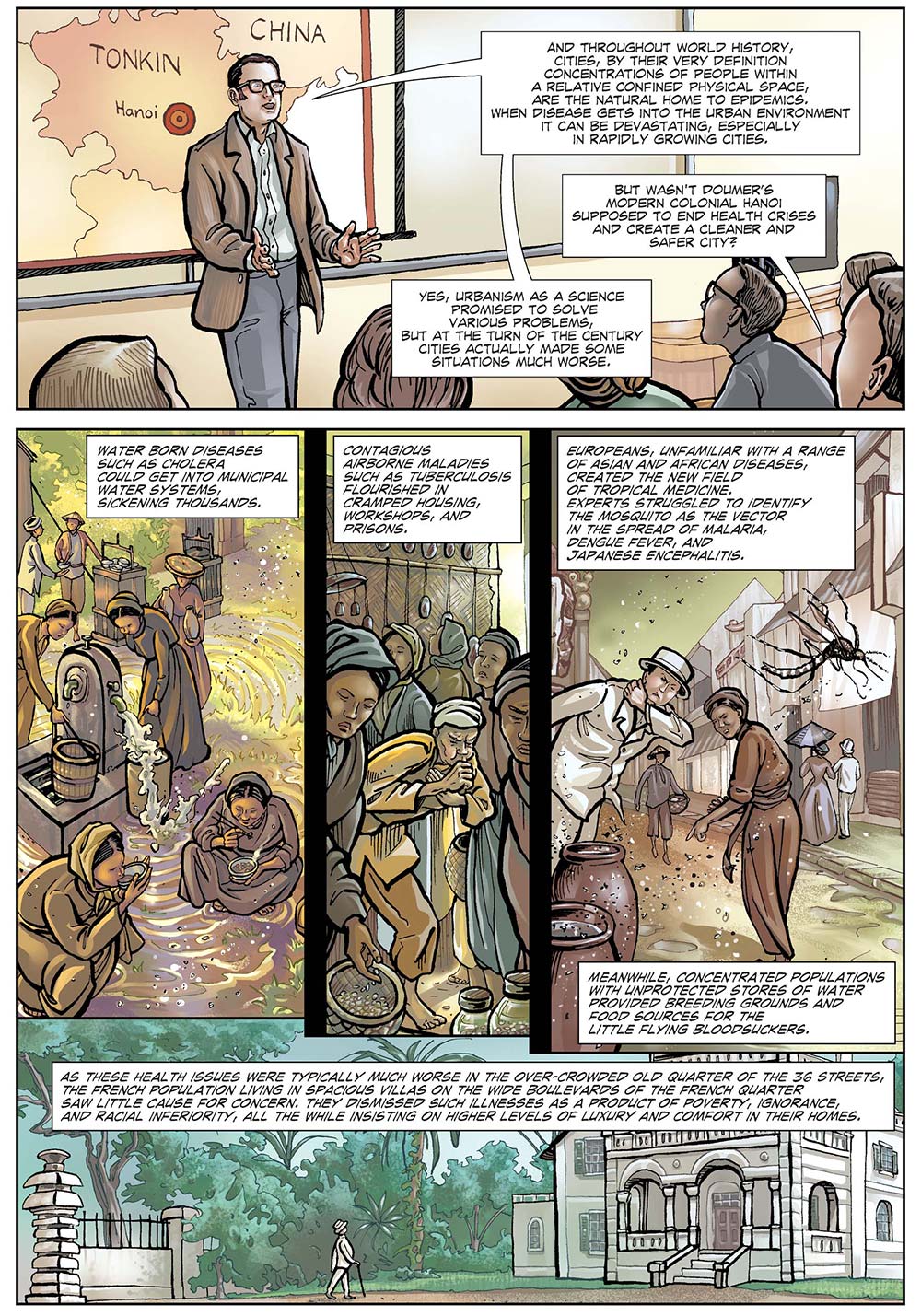
These press reports illustrate the ways in which the colonizing powers fused medical science and racism. The situation over a century ago resonates with contemporary xenophobic attacks on China and Chinese bodies. In class, I teach my students that President Trump’s derogatory use of terms such as “Kung Flu” and “China virus” for the current pandemic is merely the latest manifestation of Sinophobia. Both then and now, Sinophobia overshadows serious discussion of the prevalence of zoonotic diseases in China and Southeast Asia. While historical figures a century ago lacked crucial scientific information on animal to human transmission of disease, such ignorance is unforgiveable today. 9
Thus, I’ve tried to turn this pandemic into a teachable moment. Fortunately, this has required rather little in the way of retooling. In the past, my history of Southeast Asia students studied the history of racialized colonial power relationships, Sinophobia, and the ways in which long-distance transportation networks and globalization impacted disease. Now they can compare their historical knowledge with today’s crises.
Michael G. Vann
Michael G. Vann is an American historian who serves as Professor of History at California State University, Sacramento. He specializes in the history of the French colonial empire.
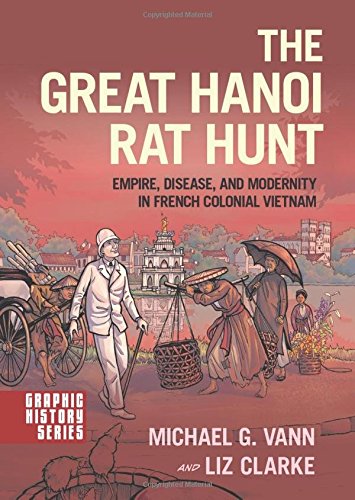
Notes:
- Michael G. Vann, The Great Hanoi Rat Hunt: Empire, Disease, and Modernity in French Colonial Vietnam (New York: Oxford University Press, 2018), “Hanoi in the Time of Cholera: Epidemic Disease and Racial Power in the Colonial City” in Laurence Monnais and Harold J. Cook (eds.), Global Movements, Local Concerns: Medicine and Health in Southeast Asia (Singapore: National University Singapore Press, 2012), “Of le Cafard and Other Tropical Diseases: Perceived Threats to White Colonial Culture in Indochina” in Jennifer Yee (ed.), France and ‘Indochina:’ Cultural Representations (Lexington, 2005), and “Of Rats, Rice, and Race: The Great Hanoi Rat Massacre, an Episode in French Colonial History,” French Colonial History (2003). ↩
- Anthony D. King, Colonial Urban Development: Culture, Social Power and Environment (London: Routledge, 1976), Paul Rabinow, French Modern: Norms and Forms of the Social Environment (Chicago: University of Chicago Press, 1995), Gwendolyn Wright, The Politics of Design in French Colonial Urbanism (Chicago: University of Chicago Press, 1991), James C. Scott, Seeing Like a State: How Certain Schemes to Improve the Human Condition Have Failed (New Haven: Yale University Press, 1999) and Timothy Mitchell, Colonising Egypt (Berkeley: University of California Press, 1991). ↩
- Rudyard Kipling, Rudyard Kipling’s Verse (Garden City, NY: Doubleday, 1940): pp. 321–323. ↩
- Gillen D’Arcy Wood, Tambora: The Eruption That Changed the World (Princeton, N.J.: Princeton University Press, 2015). ↩
- Myron Echenberg, Plague Ports: The Global Urban Impact of Bubonic Plague, 1894-1901 (New York: New York University Press, 2010). ↩
- G G. Rupert, The Yellow Peril: or, The Orient vs. the Occident as Viewed by Modern Statesmen and Ancient Prophets (Choctaw, Okla.: Union publishing co., 1911) and John Kuo Wei Tchen and Dylan Yeats, Yellow Peril!: An Archive of Anti-Asian Fear (New York: Verso, 2014). ↩
- “Battling the Plague”. Los Angeles Herald (Los Angeles) November 15, 1908. ↩
- “The Scourge of the Century”. Lincoln County leader (Toledo, Lincoln County, Or.) May 11, 1900. ↩
- Mike Davis, The Monster at Our Door: The Global Threat of Avian Flu (New York: New Press, 2005). ↩
